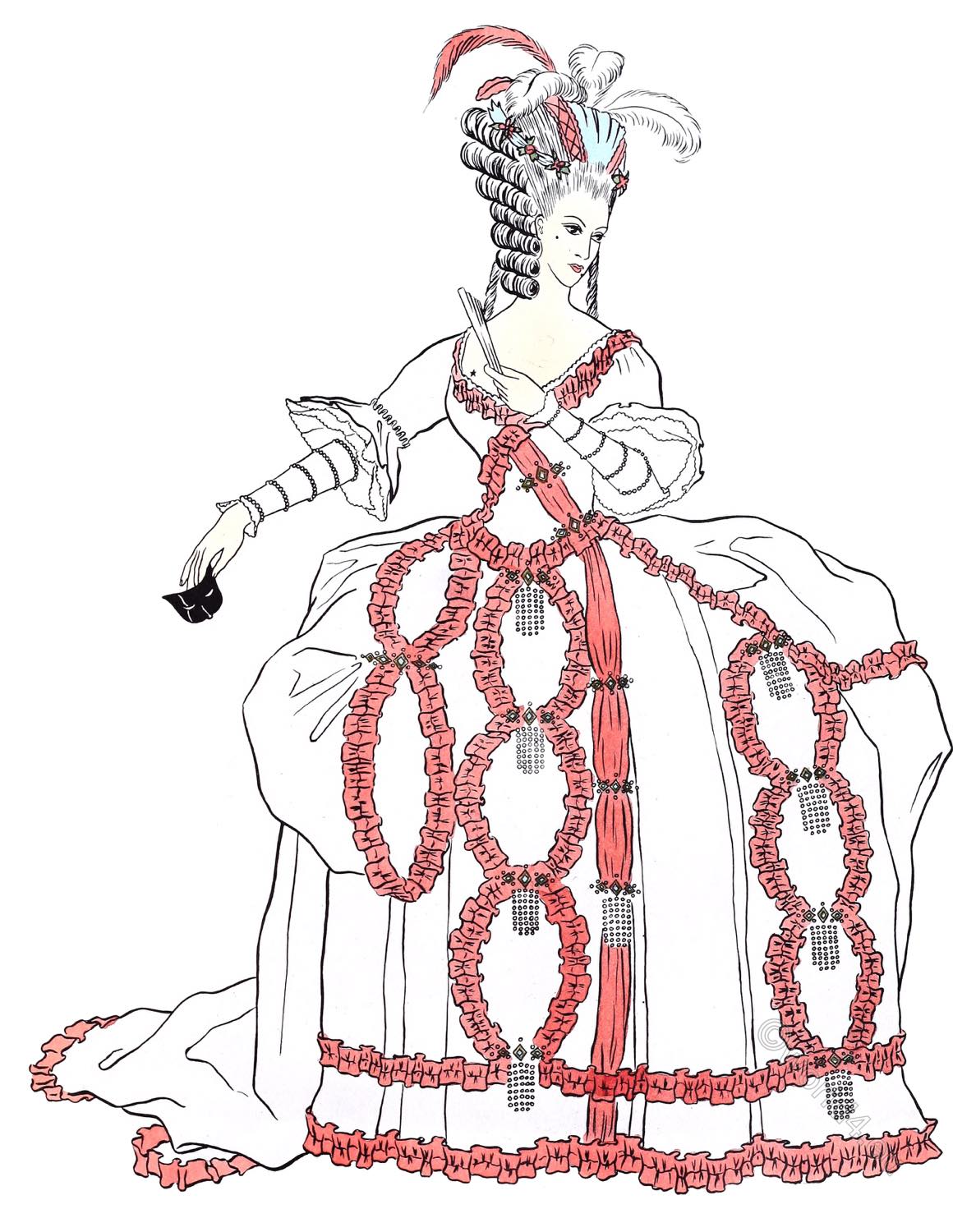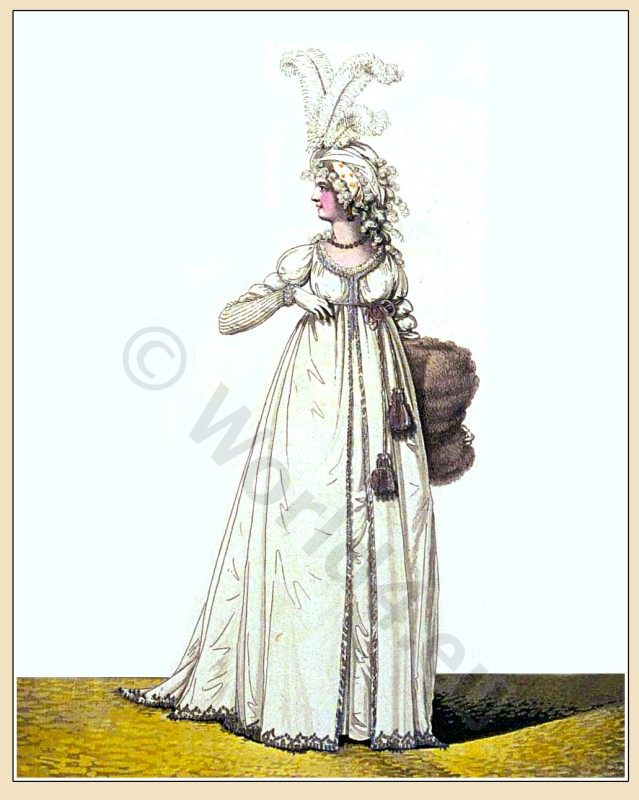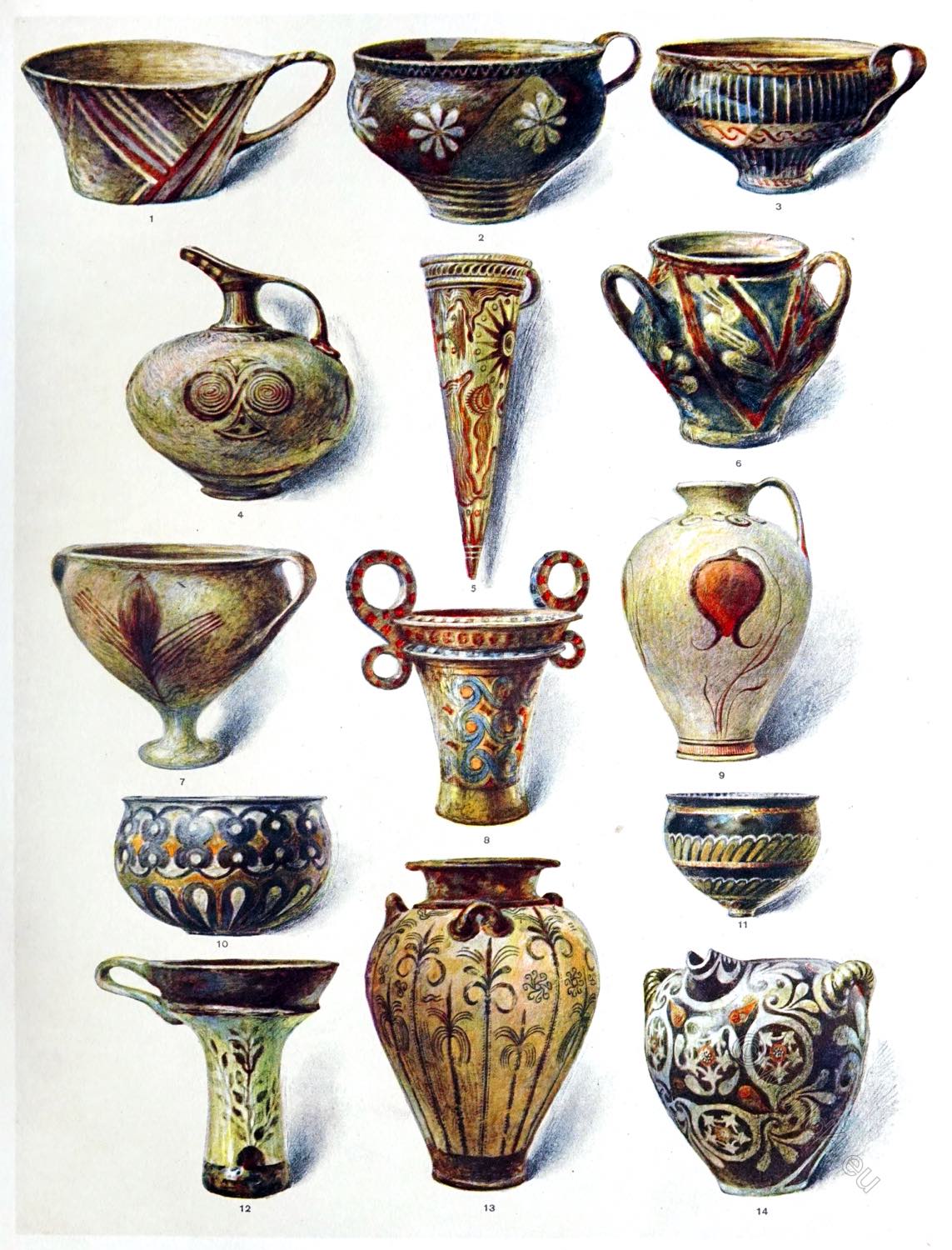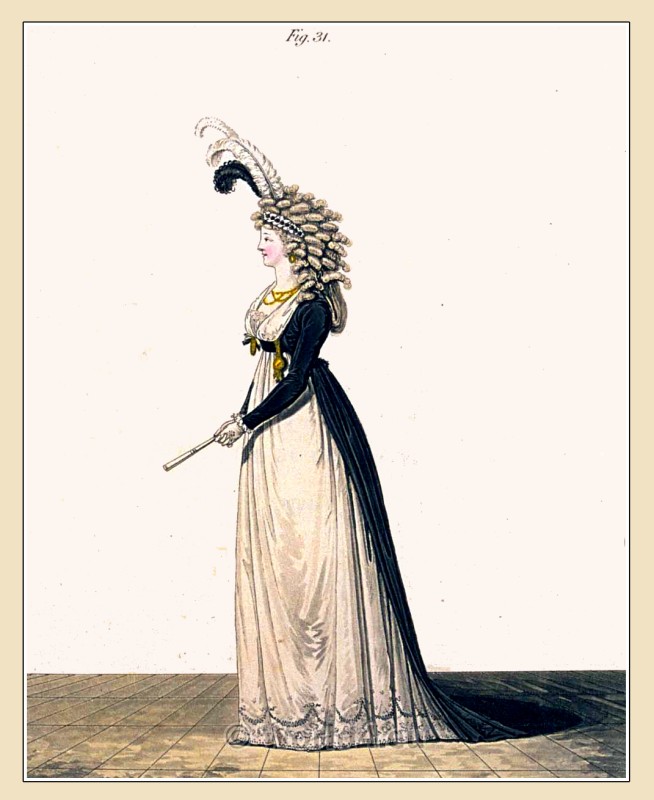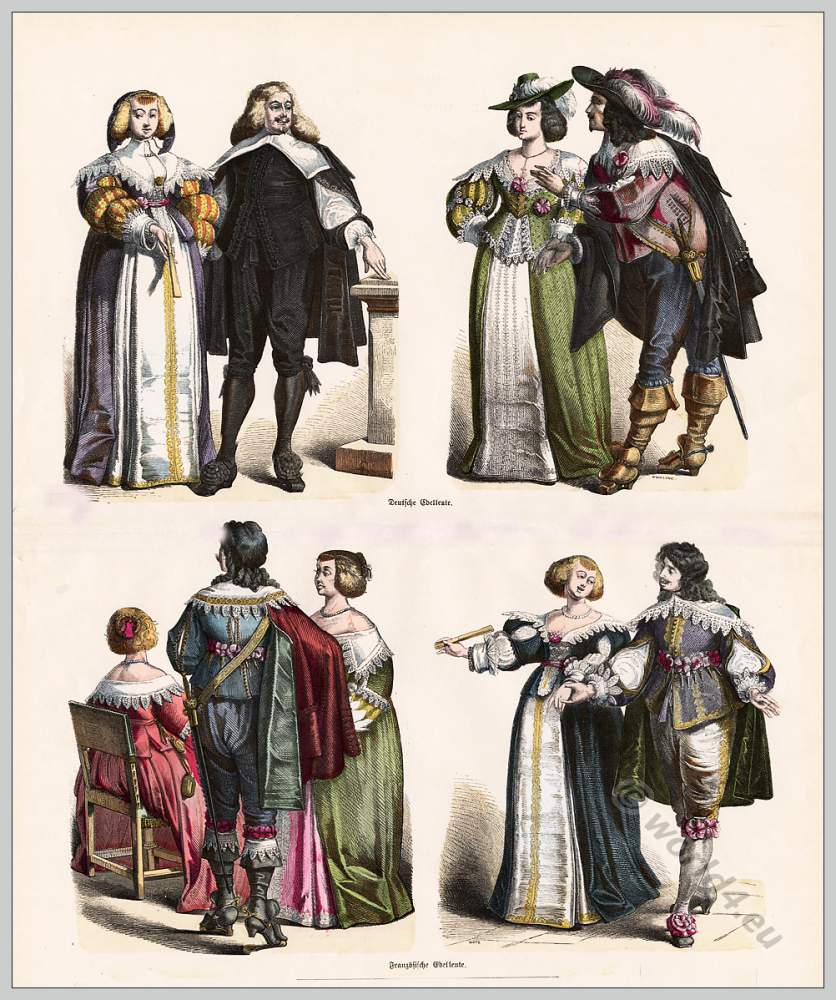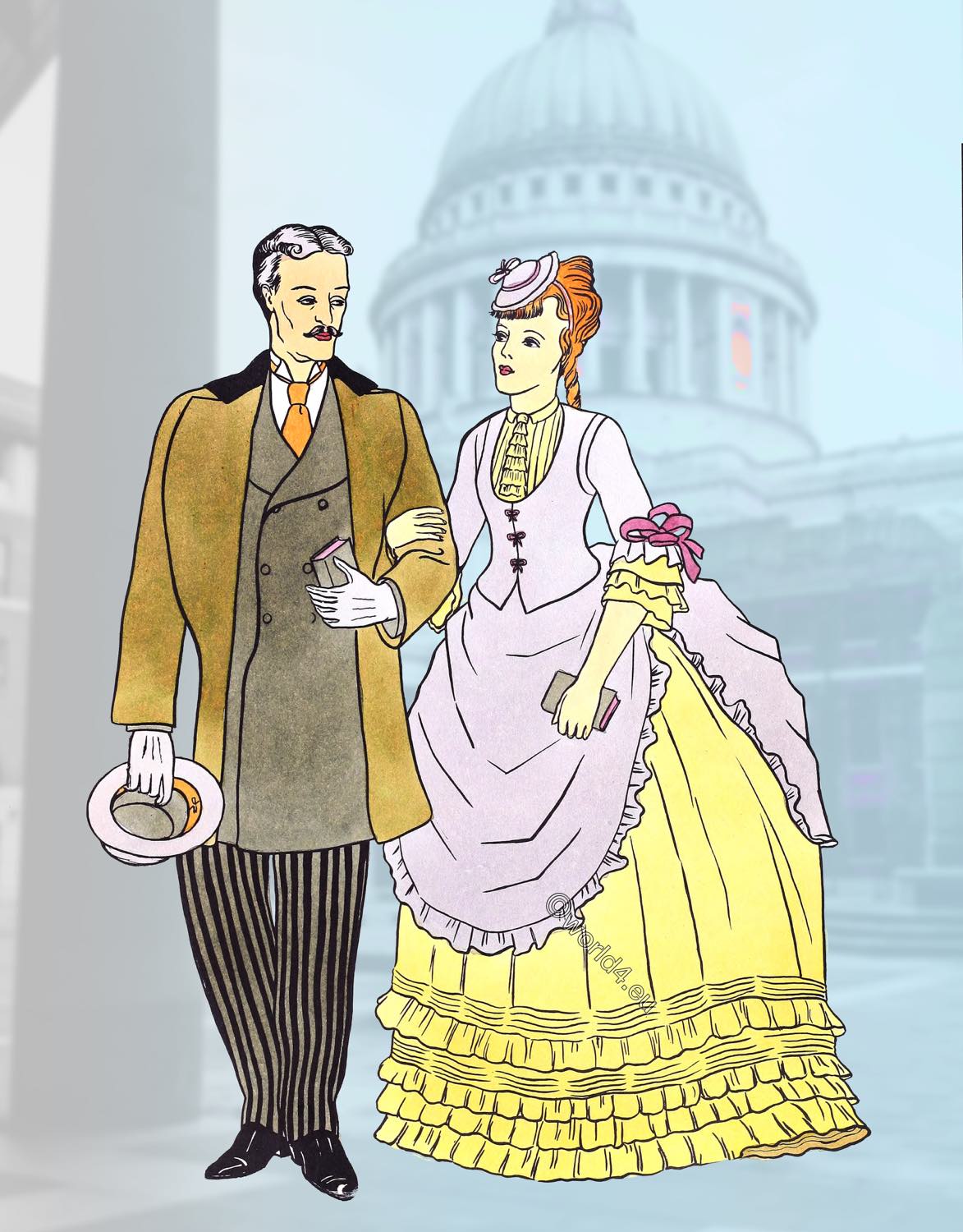
LATE VICTORIAN
PLATE NO. 103. 1865-1890.
Victorian Aristocrats afternoon wardrobe.
This man and woman on their way to church are dressed in a manner becoming the late Victorian aristocrats on a semiformal afternoon occasion. The man’s ensemble is that of a conservative middle-aged gentleman. His clothes have been carefully tailored; there is nothing “flashy” about them, and he is dressed in good taste.
The hair has become much less luxuriant than it had been, and the only thing about it that distinguishes him from a man of the 20th century is the characteristic manner in which he has combed his hair straight out from the part and then curled the edges into little horns. Hair on the face is fast disappearing, indicating the imminence of the clean-shaving 20th century. However, mustaches, beards, and even side-whiskers wore not rare.
He wears the rather high wing collar with the four-in-hand, the new style neckwear that became popular during that era. It is no different from the modern four-in-hand except for being tied with a large knot.
His frock coat is the common double-breasted model with wide lapels. Notice how high it is cut, hiding any signs of the waistcoat which, we may be sure, he wore. Notice its finger-tip length and its drab, gray color. The striped trousers are rather close-fitting and still creaseless and cuffless. Note, too, their length. The laced shoes are high, reaching to the ankle. The gloves are gray kid and the hat a “topper.” The top hat of the 19th century wasn’t always black. Very often, especially in afternoon ensembles, it was of a light color.
This particular feminine costume is interesting in that it shows the skirt form that led directly to the formation of the bustle. The underskirt, becoming more prominent, has also become more colorful and decorated. It is still full, but the bulk of the material has been pushed to the back. Trimming in the form of ruffles and tucks decorates the bottom of the skirt, which is long enough to completely conceal the shoes. The overskirt has been gathered up at each side, so that the front gives rather an apron effect. The bunching-up at the rear indicates already the protuberance that is to follow in a f ew short years. In regard to color during this period, it seems well to note here that the underskirts were mostly lighter in color than the outer ones.
The bodice change is slight in comparison. It retains its fittedness, but the neckline innovates a simple and mannish style of the inset shirt front. The collar is fitted in at the base of the throat, and from it descends a gathered front and a jabot of some light material. To add to the masculine effect, the bodice is slit down the front and secured with small string bows. A change in the sleeve brings to the fore the simple masculine coat type. This particular model ends in a ruffle at the elbow, with a simple flounce showing as undersleeve. The ribbon bows are forms of decoration.
We see here the advent of the “waterfall,” the typical headdress of the late Victorian era. Fringed in front, massed in a high chignon in the rear, and allowed to fall in a single loose curl down the back of the neck, the waterfall is a simple and becoming form of hair-dress. Perched well forward on the head, to expose the hair style, is a small hat with very snail crown and brim. This one ties underneath the hair in the back, although many possessed strings and ribbons that were allowed to fall free about the shoulders.
History of Costume

